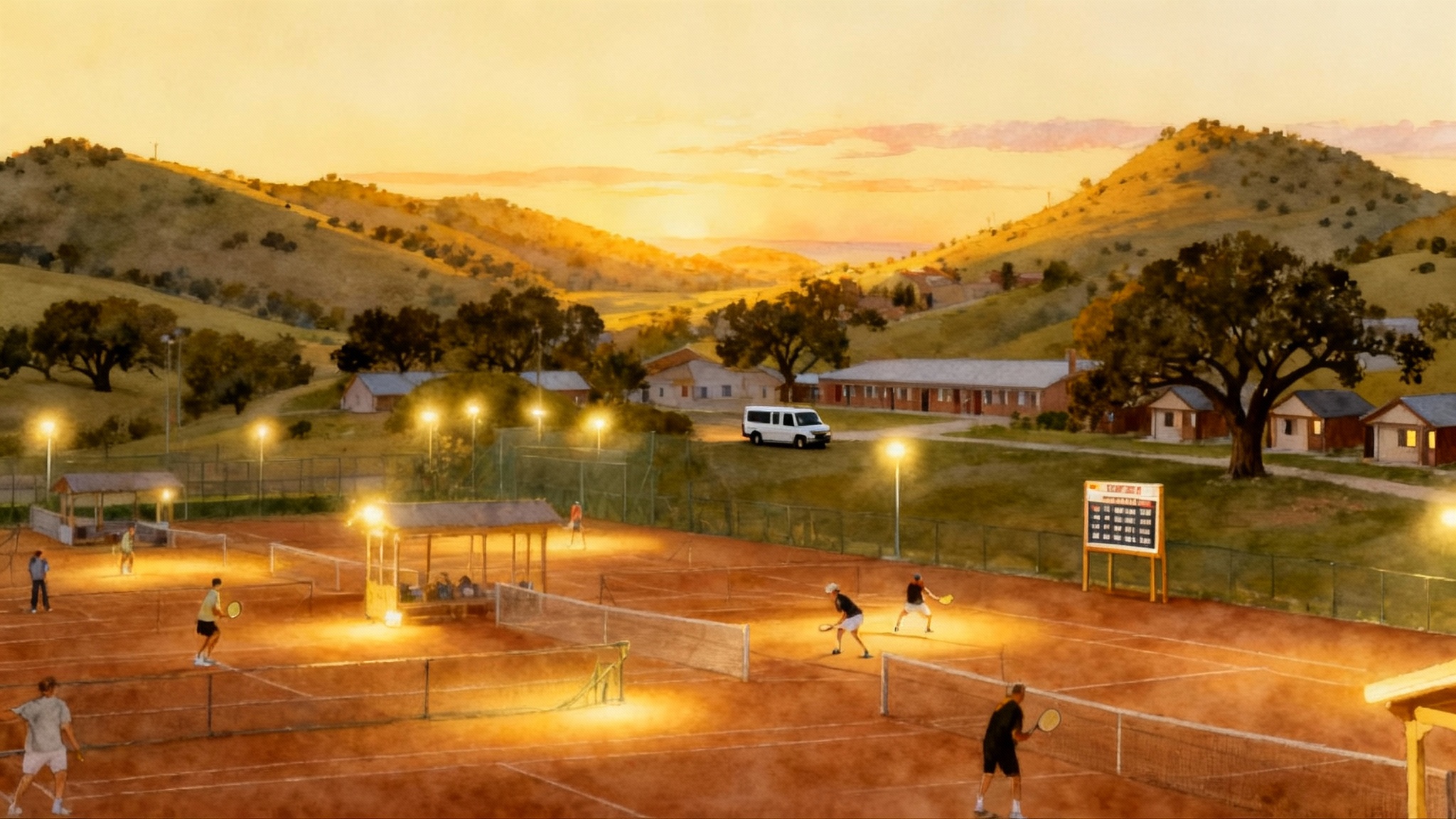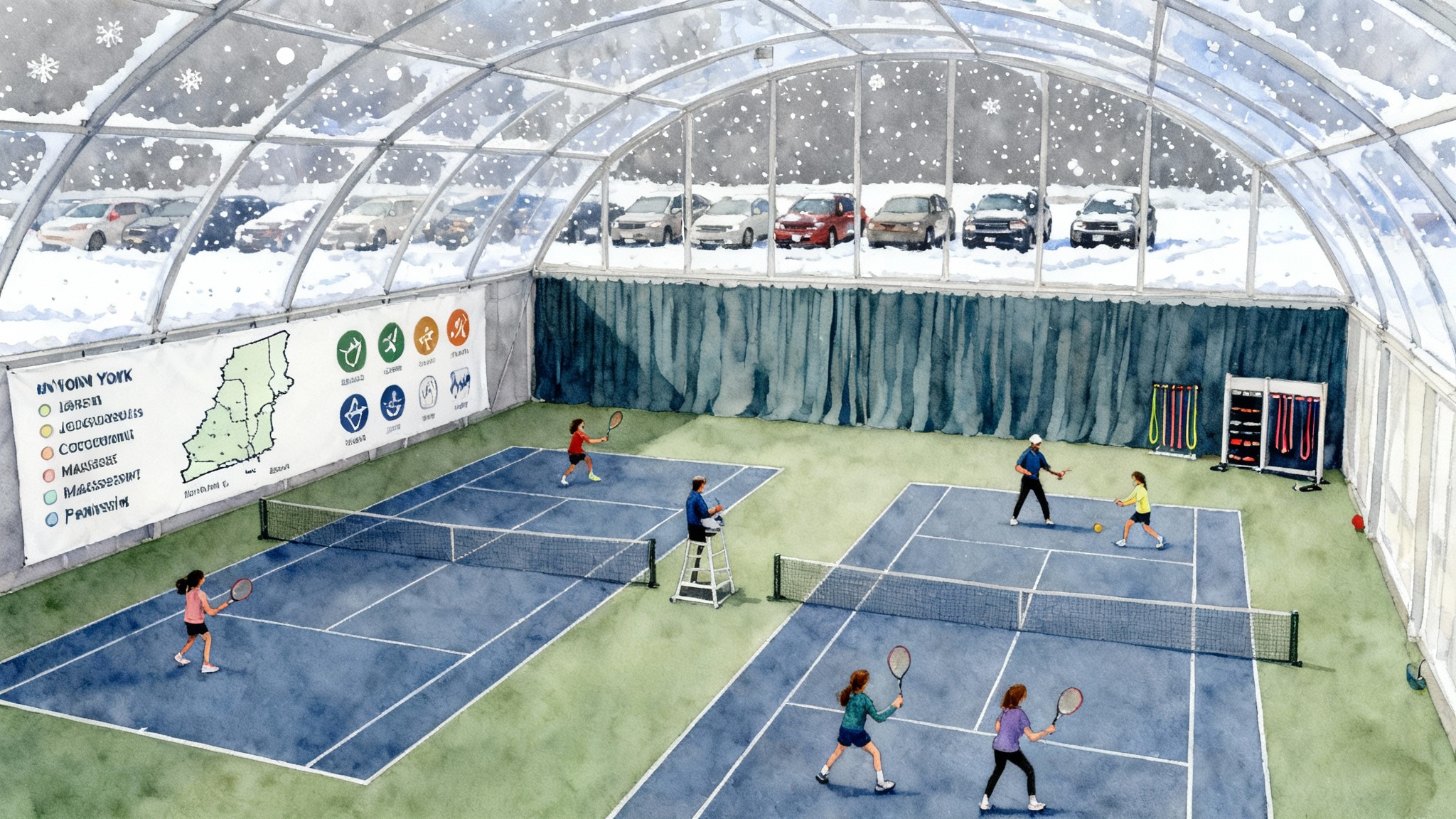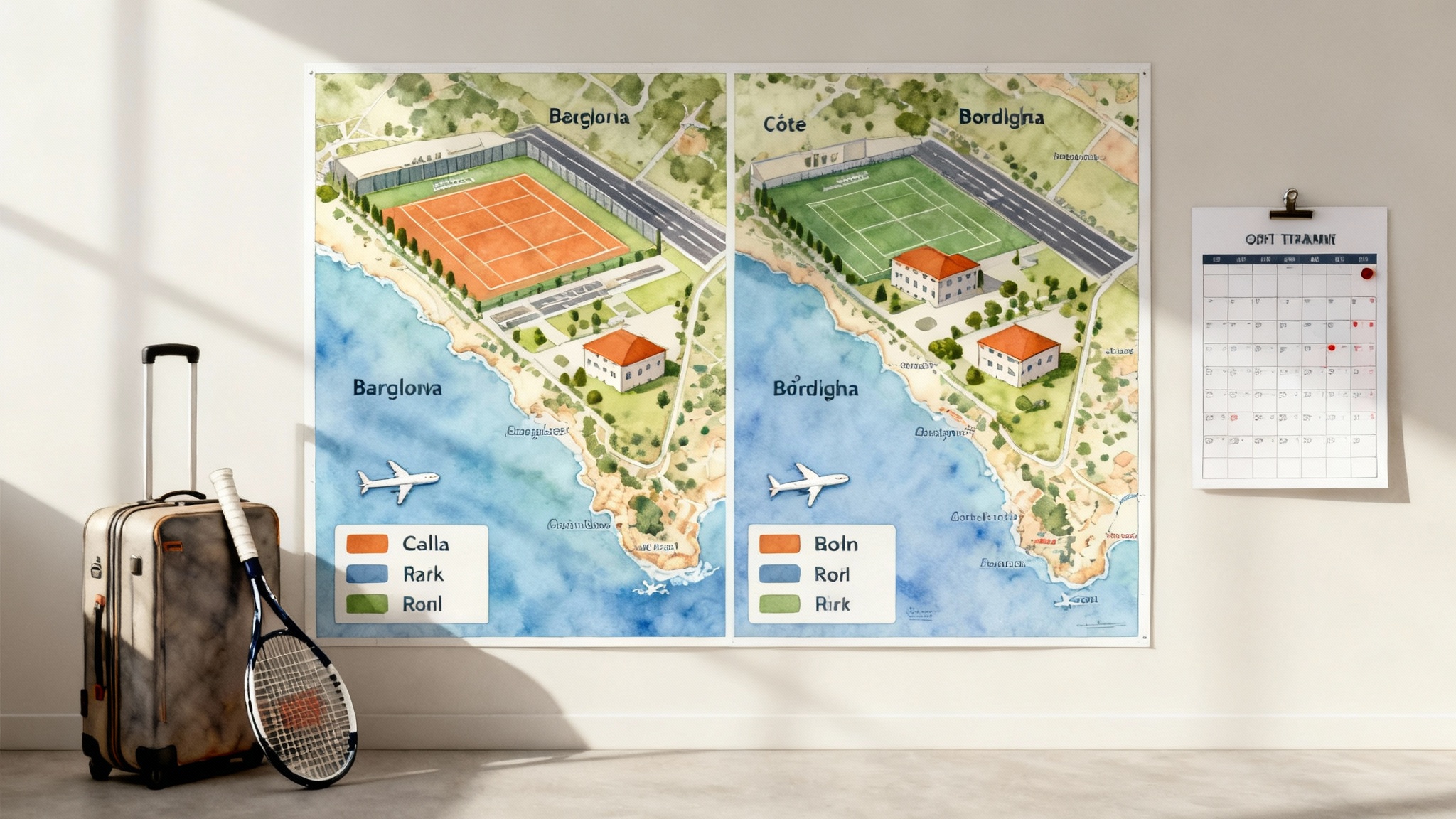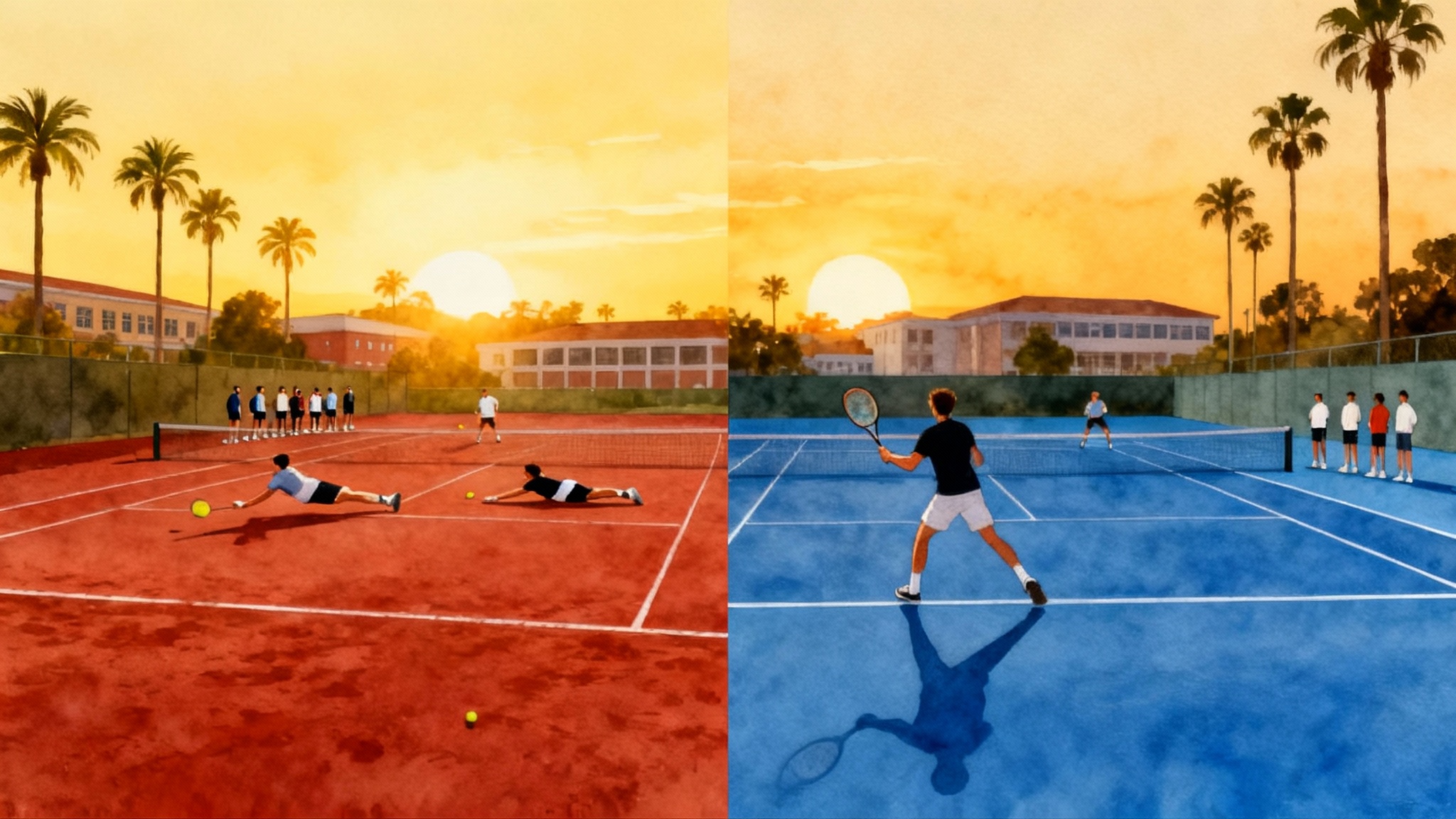Best Junior Tennis Academies in Canada 2025–2026: ACE vs VITA
A comparison-first buyer’s guide to Canada’s top junior academies for 2025–2026. We pit ACE Toronto against Vancouver International Tennis Academy, then rank nationwide options, with costs, coaching ratios, travel, and schedules.
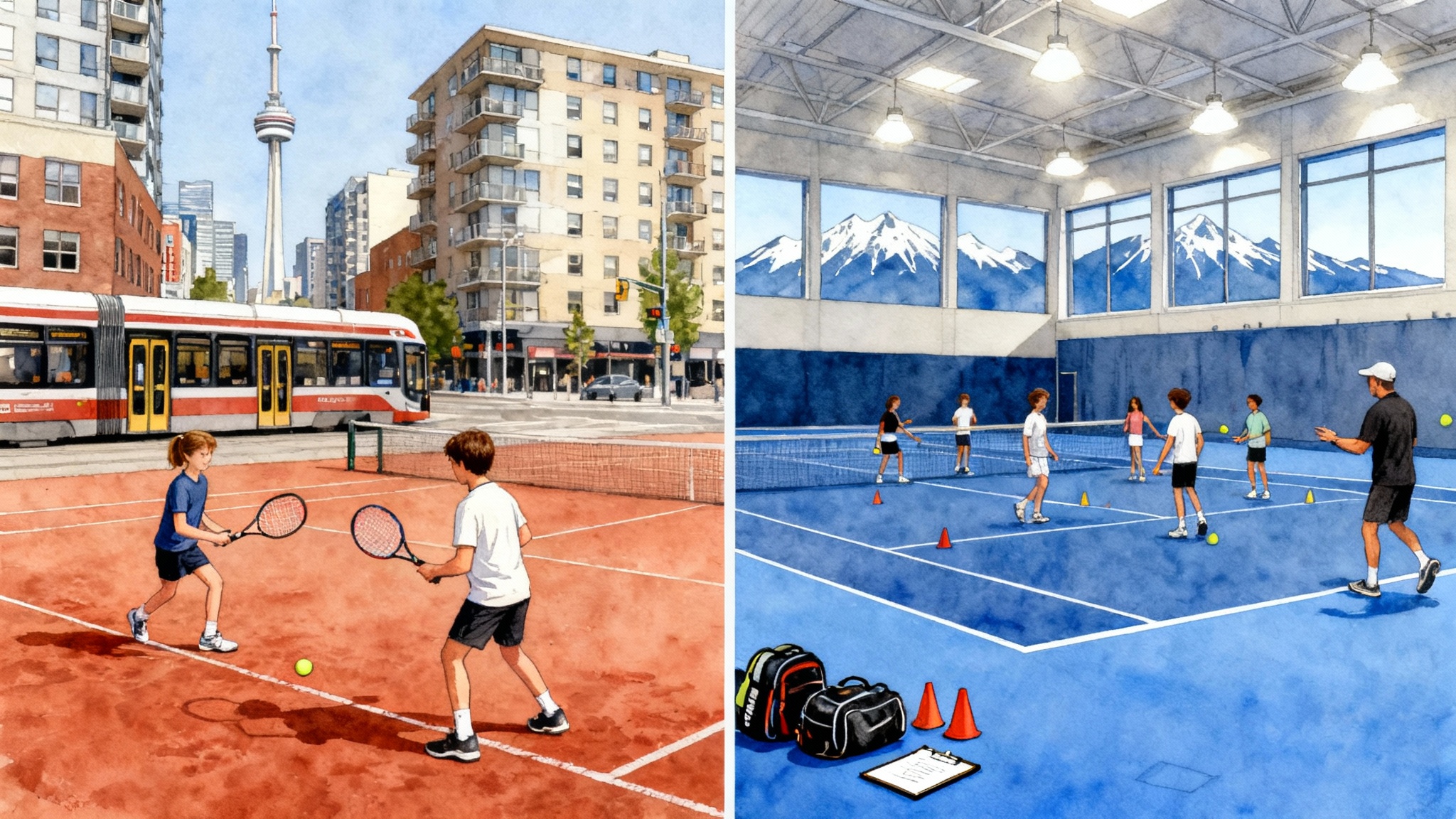
How we built this 2025–2026 ranking
Parents and players do not buy a brand. They buy a pathway. Our framework ranks Canadian junior academies on how well they deliver that pathway from ages 10 to 18. We weighted eight factors that most determine consistent progress:
- Training model: balance of technical, tactical, mental, and physical sessions; year-round continuity; individualized planning
- Indoor capacity: ability to train regardless of weather, plus training density through winter
- Surfaces: relevance to college and international play, and how well the academy teaches surface adaptation
- Coaching ratios: typical player to coach ratios in squads and access to targeted private sessions
- Academic integration: commute versus on-site study support, realistic homework windows, exam accommodation
- UTR and WTN progression: evidence of rating movement for similar profiles, match volume, level of competition
- Costs: tuition, privates, fitness, court fees, and travel; transparency and predictability
- Tournament travel: organized trips to provincial, national, and International Tennis Federation junior events
This is a buyer-first ranking. It rewards programs that reliably move juniors up competitive levels while protecting academics and family sanity. For recruiting timelines and video, see our 2025 college tennis recruiting roadmap.
The headline matchup: ACE Toronto vs Vancouver International Tennis Academy
Think of ACE and VITA as two strong schools with different campuses. Both can deliver progress. The better choice depends on the athlete’s profile and your weekly logistics. Review program specifics in the ACE Toronto academy profile and the Vancouver International Tennis Academy profile before you book a trial.
ACE Tennis Toronto: the city-center, red-clay commuter
- Training model: technical fundamentals anchored on clear progressions, heavy use of ball controls and footwork patterns, with a weekly rhythm that balances squads and add-on privates
- Indoor capacity: reliable winter access through partner clubs; summer blocks feature red clay which sharpens point construction and patience
- Surfaces: red clay in the competitive season, hard courts in winter; juniors learn to defend, build points, and finish at net
- Coaching ratios: small-group squads typically in the mid single digits per coach in advanced blocks; privates recommended before or after squads to accelerate technical change
- Academic integration: designed for day students; manageable commute windows for downtown families; study blocks commonly slotted early afternoon or evening
- UTR and WTN progression: best results historically with players who need cleaner biomechanics and point patterns; strong fit for 7–10 UTR players seeking a leap with structure and repetition
- Costs: middle to upper band for a major Canadian city; add predictable extras for privates and fitness
- Tournament travel: consistent presence at Ontario provincial events, national qualifiers, and select cross-border trips
Best for: committed commuters who thrive on routine, value red clay learning, and want a technical reset without changing schools.
Vancouver International Tennis Academy (VITA): the fully indoor, community-club base
- Training model: compact, high-intensity squads with a premium on live ball, decision training, and fitness integration inside the same block
- Indoor capacity: fully indoor footprint that protects training volume during long wet months; strong training density October to March
- Surfaces: almost entirely hard courts; emphasis on first-strike patterns, return plus one, and serve accuracy
- Coaching ratios: small, disciplined squads; clear expectations and video feedback baked into cycles
- Academic integration: ideal for Lower Mainland commuters; morning or late-day squads leave school core intact
- UTR and WTN progression: strong for 8–11 UTR players who already compete weekly and need higher ball speed and fitness to break through
- Costs: middle to upper band; travel concentrated on British Columbia and Pacific Northwest events
- Tournament travel: robust schedules across British Columbia plus targeted International Tennis Federation junior trips when athletes are ready
Best for: match-tough commuters who want hard-court intensity, reliable winter volume, and structured feedback loops.
The practical tiebreakers
- Commute reality: if both are plausible, pick the drive you can sustain four to five days per week in January.
- Surface story: if your player rushes points or struggles to build, ACE’s clay blocks teach patience and patterns. If your player needs to raise pace and hold serve, VITA’s hard-court density often moves the needle faster.
- Coaching chemistry: schedule a trial and look for clear, actionable feedback in the first 30 minutes. The right voice often beats a slightly shorter commute.
The buyer-centered ranking for 2025–2026
This list blends national reach, year-round capacity, and fit for the most common junior pathways. It is not a list of professional alumni. It is a list of places where a typical committed junior can reliably get better.
- ACE Tennis Toronto, Ontario
- Edge: red clay education plus city-center access; strong technical scaffolding
- Watch out for: commute parking windows and private lesson availability at peak times
- Who it fits: 7–10 UTR players needing a biomechanical tune-up and point-construction base
- Vancouver International Tennis Academy, British Columbia
- Edge: fully indoor consistency and hard-court intensity; compact squads with feedback
- Watch out for: court-time demand during tournament peaks; plan privates well ahead
- Who it fits: 8–11 UTR competitors chasing match-speed robustness and fitness gains
- National high performance program, Montreal
- Edge: national-level training culture and match volume in a major event hub
- Watch out for: entry standards are selective; good for advanced juniors ready for higher density
- Who it fits: rising 10–12 UTR players seeking a step into national-level daily standards
- Saville Community Sports Centre High Performance, Edmonton
- Edge: proven winter training density and a culture that blends college and pro aspirations
- Watch out for: travel calendar planning due to geography; book block training early
- Who it fits: prairie families who want a one-stop training and fitness base
- OSTEN and VICTOR Alberta Tennis Centre High Performance, Calgary
- Edge: modern indoor complex, integrated strength and conditioning, and well-organized tournament logistics
- Watch out for: altitude and ball speed require an adjustment for out-of-province visitors
- Who it fits: juniors who like structured week plans and clear communication with families
- Atlantic Tennis Centre High Performance, Halifax
- Edge: large indoor footprint for the region, with accessible coaching and a growing event pipeline
- Watch out for: more travel to hit deeper competitive fields; plan a few road trips each term
- Who it fits: Atlantic families seeking reliable winter hours without moving provinces
- ACE Burlington High Performance, Ontario
- Edge: sister campus continuity with Toronto, strong culture of fundamentals, and good summer blocks
- Watch out for: popular time slots fill early; coordinate with Toronto if you split attendance
- Who it fits: families west of the city who want ACE methods without the downtown commute
- North Vancouver area high performance options, British Columbia
- Edge: proximity to strong British Columbia events and access to indoor courts through winter
- Watch out for: program depth varies by level; confirm coaching ratios in your specific squad
- Who it fits: North Shore families prioritizing short commutes and consistent hard-court reps
Note: Selection and scheduling policies evolve each season. Always confirm current squads, ratios, and time blocks during your visit.
Who each program is for
- The technical reboot: players whose strokes break down under pressure and who need a reset. Look for programs with heavy progressions, basket work, and clear video checkpoints. ACE Toronto and ACE Burlington excel here.
- The match-speed accelerator: players who already compete every weekend but stall against pace. Look for live-ball intensity, serve plus one focus, and integrated fitness. VITA and Calgary’s high performance blocks stand out.
- The all-weather grinder: players who rely on daily reps regardless of rain or snow. Fully indoor bases in Vancouver, Edmonton, and Halifax protect volume.
- The academic-first commuter: families keeping their school and using tennis as an afternoon sport. City-center or neighborhood programs with predictable end times are best.
- The college-bound late riser: athletes who bloom between ages 15 and 17 and need a fast yet realistic path to 9–11 UTR. Choose programs with targeted match play and college advisory, plus an honest tournament plan.
Sample weekly schedules you can adapt
These are realistic, sustainable templates that fit school, recovery, and match play. Adjust times to your local club schedule.
ACE Toronto style week, grades 8–11
- Monday: 4:00–4:30 arrival and warm up; 4:30–6:00 squad technical focus; 6:10–6:40 fitness core and mobility; 7:30 homework block
- Tuesday: 7:00–7:45 private lesson technical priority; school day; 5:30 recovery run or bike 20 minutes; 20 minutes shoulder care
- Wednesday: 4:30–6:30 squad live ball and patterns; 6:35–7:05 serve practice; evening homework
- Thursday: off court 45 minutes strength circuit; visualization 10 minutes; flexibility 15 minutes
- Friday: 4:00–6:00 match play set play and tiebreakers; coach debrief 10 minutes
- Saturday: tournament day or two-hour clay drills if no tournament
- Sunday: active recovery walk or swim; 20 minutes video review and goal setting
VITA style week, grades 9–12
- Monday: 6:30–8:00 morning squad live ball; school day; 30 minutes mobility and band work at night
- Tuesday: 4:00–5:30 squad serve plus one and return plus one; 5:35–6:05 fitness acceleration and agility
- Wednesday: 6:45–7:30 private lesson on serve or backhand; school day; 20 minutes shoulder care
- Thursday: 4:00–5:45 squad patterns, transition, and finishing; brief video feedback
- Friday: 4:00–5:30 match play; 5:30–5:40 goal notes for weekend tournament
- Saturday or Sunday: British Columbia tournament or practice sets; recovery walk 20 minutes
Decoding costs without surprises
Every academy prices differently, but the structure is similar. Use this banding to plan. Final numbers vary by city and season.
- Tuition band: group squads per term or monthly. A higher price does not guarantee progress. You are buying a daily environment and feedback quality.
- Privates: the fastest lever for change when used surgically. One well-timed private per week can be more effective than three unfocused ones.
- Fitness: confirm who leads it, how it is periodized, and whether it targets tennis-specific qualities like acceleration, rotation, and deceleration.
- Court fees and balls: ask whether they are bundled. Small line items add up over twelve months.
- Travel: build a tournament budget by quarter. Include coach travel fees and your family’s flights and hotels. Predictability is progress.
Coaching ratios and how to read them
- 1 coach to 4 players: excellent for advanced squads when the coach can float actively among courts
- 1 coach to 6 players: common and workable if the session is tightly planned and assistant coaches manage feeds and video
- 1 coach to 8 players: acceptable only for fitness or structured point play with clear constraints
Ask how often ratios are protected when a coach travels. The answer tells you about the program’s bench strength.
Understanding UTR and WTN progression
UTR and WTN are measurement tools. What moves them is consistent, appropriate wins.
- Baseline reality: get 25 to 35 meaningful matches per term at the right level. Not too easy, not too hard. Ratings reward competitive matches.
- Tactical identity: juniors progress faster when they can describe how they win points in ten words or fewer. For example, serve wide, attack forehand, finish at net.
- Serve and return: both ratings react quickly when a player holds serve more often and breaks average opponents at least once per set.
- Surface literacy: clay teaches patience and defense. Hard courts teach first strike and depth control. The best juniors train both, even if their region favors one.
Tournament travel that accelerates learning
- Early phase: target local or provincial events that guarantee two matches. Focus on patterns and routines, not trophies.
- Middle phase: add national qualifiers and one or two International Tennis Federation junior events when results at home stabilize.
- Advanced phase: create mini-blocks of three events in four weeks to build momentum without overloading school.
Ask academies to show you last season’s trip calendar for your age group. Look for sensible spacing around school exams.
Tryout and visit checklist
Bring this list and write down concrete answers while you watch.
- Session structure: how many minutes are live ball, fed ball, and serves
- Feedback style: count how many actionable cues your player receives in the first 30 minutes
- Ratios and court sharing: confirm head coach presence and assistant roles
- Video: what tool is used and how clips are shared with families
- Fitness: who leads it, how often, and whether day one includes a movement screen
- Match play: the weekly slot for sets and how results are logged
- Tournaments: the default calendar for your player’s current level
- Academics: when do squads start and end, and what is the homework window
- Communication: the cadence for progress notes and term planning
- Contingencies: what happens when your player is sick, injured, or a coach travels
Green flags: crisp practice starts, constrained drills with clear goals, coaches that ask your player questions rather than monologue. Red flags: fuzzy transitions, balls rolling mid-court, and generic pep talks instead of individual cues.
Decision guide in two steps
- Step 1: pick the environment your family can sustain through February. Consistency beats intensity in bad weather.
- Step 2: pick the coaching voice your player leans into. The right voice makes hard work feel like ownership.
Final take
ACE Toronto and VITA are both strong choices. ACE shines for commuters who need a technical rebuild and the patience that red clay teaches. VITA excels for hard-court momentum, daily volume in winter, and live-ball intensity. The nationwide contenders fill regional needs with solid indoor capacity and organized travel. Use the checklists, test a week at your top choice, then commit to a quarter. Progress follows when the program, the calendar, and your player’s identity align. That is how a pathway turns into predictable growth in 2025 and 2026.
